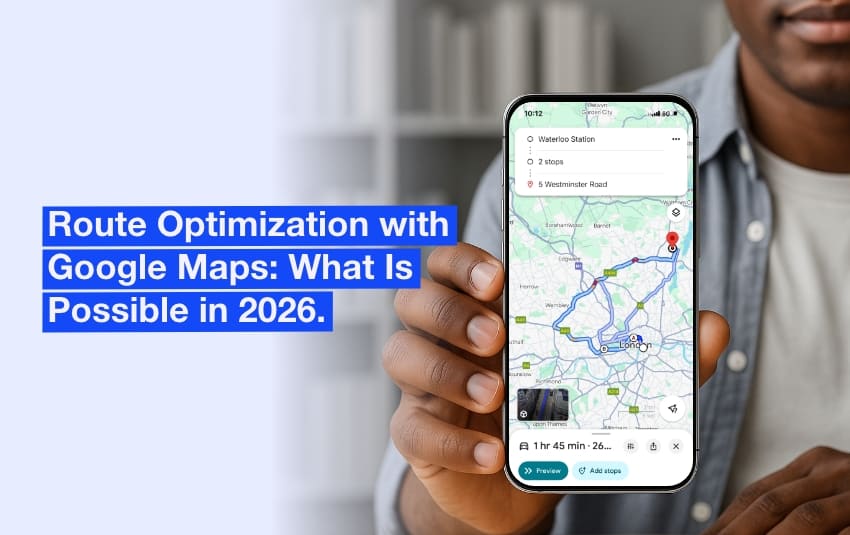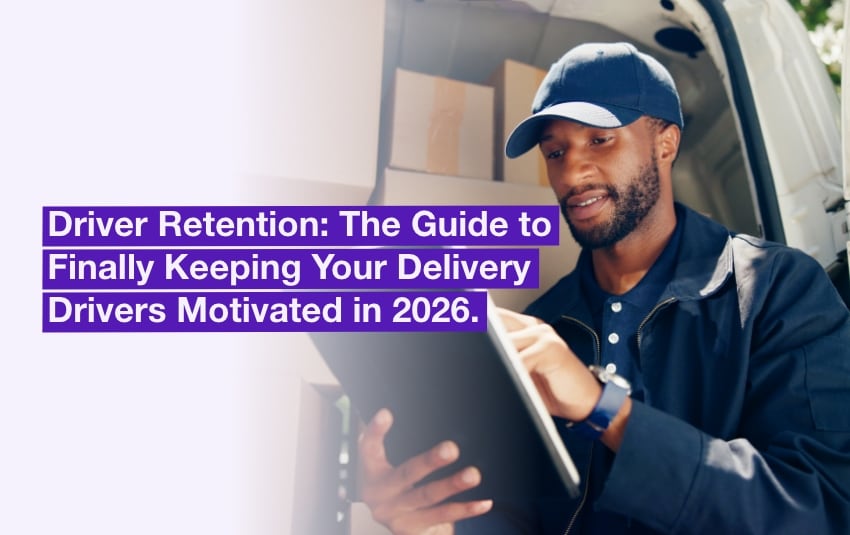Route optimisation software: 9 tips to choose the right solution
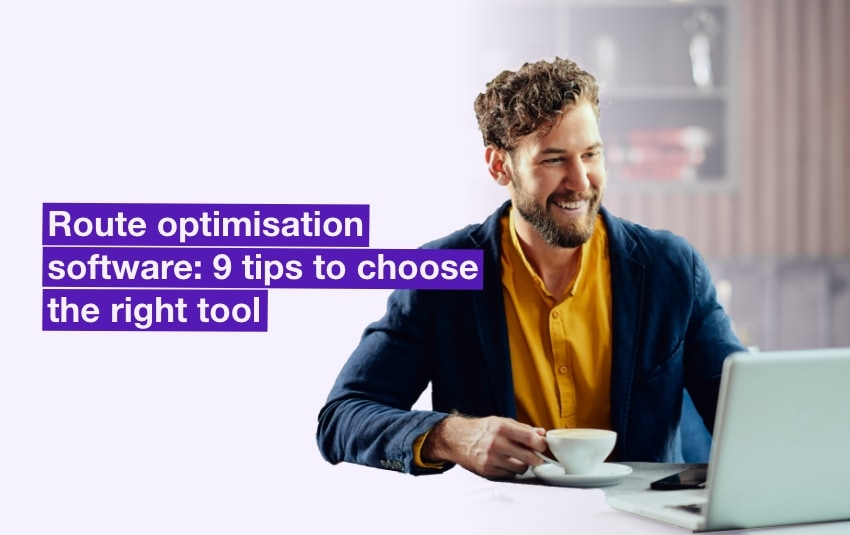
In the large family of transport software (TMS), route optimisers use artificial intelligence to plan journeys that require less time and resources. But the benefits don’t stop there! Some publishers now offer all-in-one planning tools. In addition to logistics management, they also include invoicing and communication functions.
Before committing yourself, here’s a checklist of the 9 essential questions to ask yourself when choosing the best route optimisation software.
Table of contents
- Does the route optimisation software provide all the required functions?
- Does the preferred solution take into account all your business constraints?
- What are the publisher’s references in your sector?
- Are the proposed planning methods adapted to your needs?
- Does the route optimisation software work with other business software already deployed?
- Is the solution intuitive and easy to use on all devices?
- What resources does the publisher dedicate to support and assistance?
- What is the size of the technical team and where do they work?
- How can the software be customised and upgraded?
Route optimisation software is revolutionising logistics. For transport professionals, these tools can be used to plan faster, less expensive routes.
1. Does the route optimisation software provide all the required functions?
Before looking at all the transport software available, it’s a good idea to draw up a list of the services that the solution must include. For example, if you manage parcel delivery routes, suitable software should include at least:
- A module for setting the exact characteristics of the vehicles (load capacity, engine, etc.).
- Management of time constraints required by customers.
- Real-time tracking of deliveries.
- Automated emails or text messages to inform customers when the driver is on the way.
- Decision-making tools to react more effectively to traffic jams, etc.
It is obviously up to you to adapt this list to the real needs of your business. Make sure that the expected functionalities are in place and fully operational. In other words, on this shortlist, it’s out of the question to settle for development promises!
2. Does the preferred solution take into account all your business constraints?
In addition to these essential functions, some software publishers offer solutions that are tailored to specific sectors. In fact, all route optimisation software is based on a combination of algorithms. In simple terms, an algorithm is an ordered sequence of mathematical calculations used to get a reliable result from the data entered by users. Depending on your business, certain management solutions are particularly relevant.
If, for example, you manage a fleet of vehicles that have to regularly return to the warehouse, it’s a good idea to choose transport software that includes a Pick-up and Delivery mode.
Similarly, if certain operations in the field require specific certifications or authorisations, it’s best to select a tool that takes these constraints into account in its calculations.
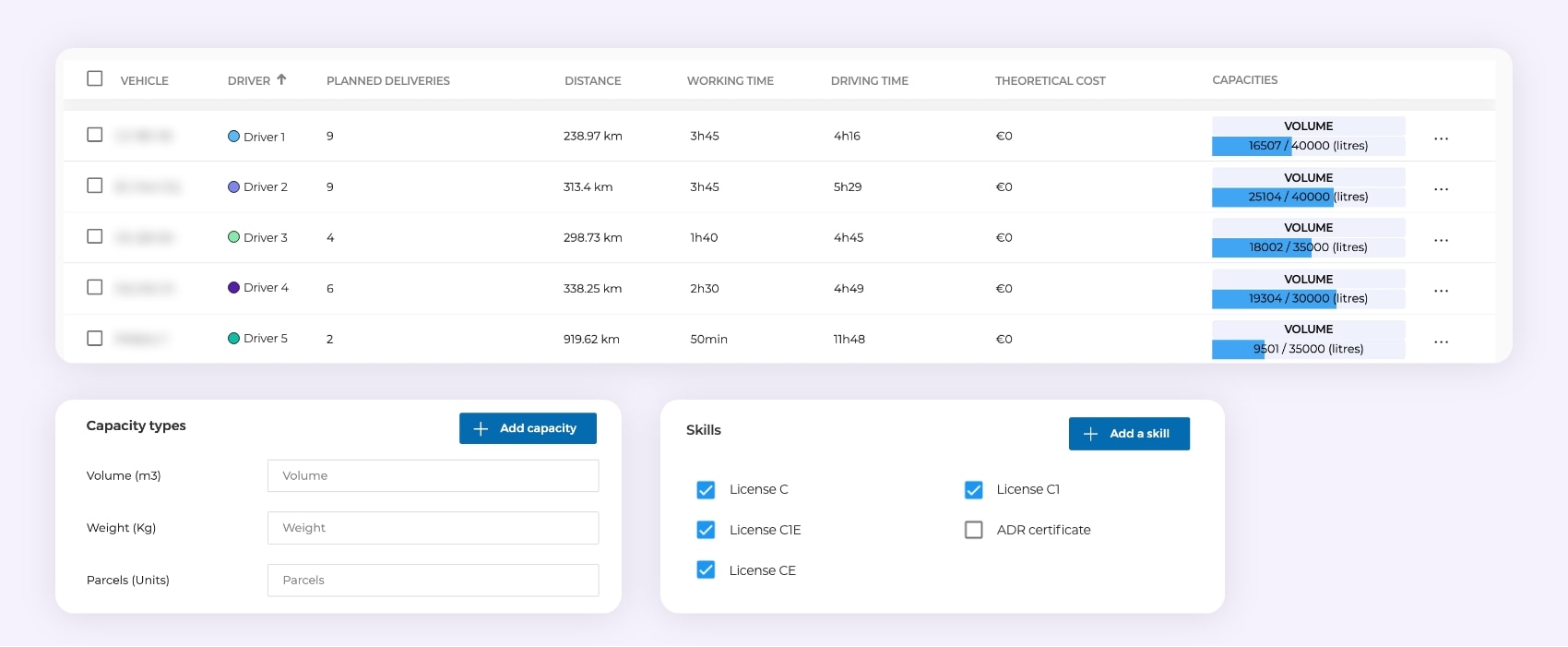
The management of staff skills and vehicle capacity on the AntsRoute tool.
3. What are the publisher’s references in your sector?
Even if some software developers prefer to remain discreet on this point, they all have one or more sector-specific references. Check out the publisher’s website or ask a sales representative about their references in your industry. On the AntsRoute website, we even have a customer testimonials section.
Here you can read feedback from users in our chosen sectors:
- Delivery of parcels and fresh produce.
- Home care services.
- Commissioning, maintenance and repair routes, etc.
4. Are the proposed planning methods adapted to your needs?
The way in which appointments are made varies greatly from one company to another. Carriers often draw up their schedules after importing one or more order files. On the other hand, many customers now schedule technical services or home repairs via an online platform.
Whatever your planning habits, you need to be vigilant on this point. Good route planning software should be flexible enough to adapt to your work processes, not the other way round!
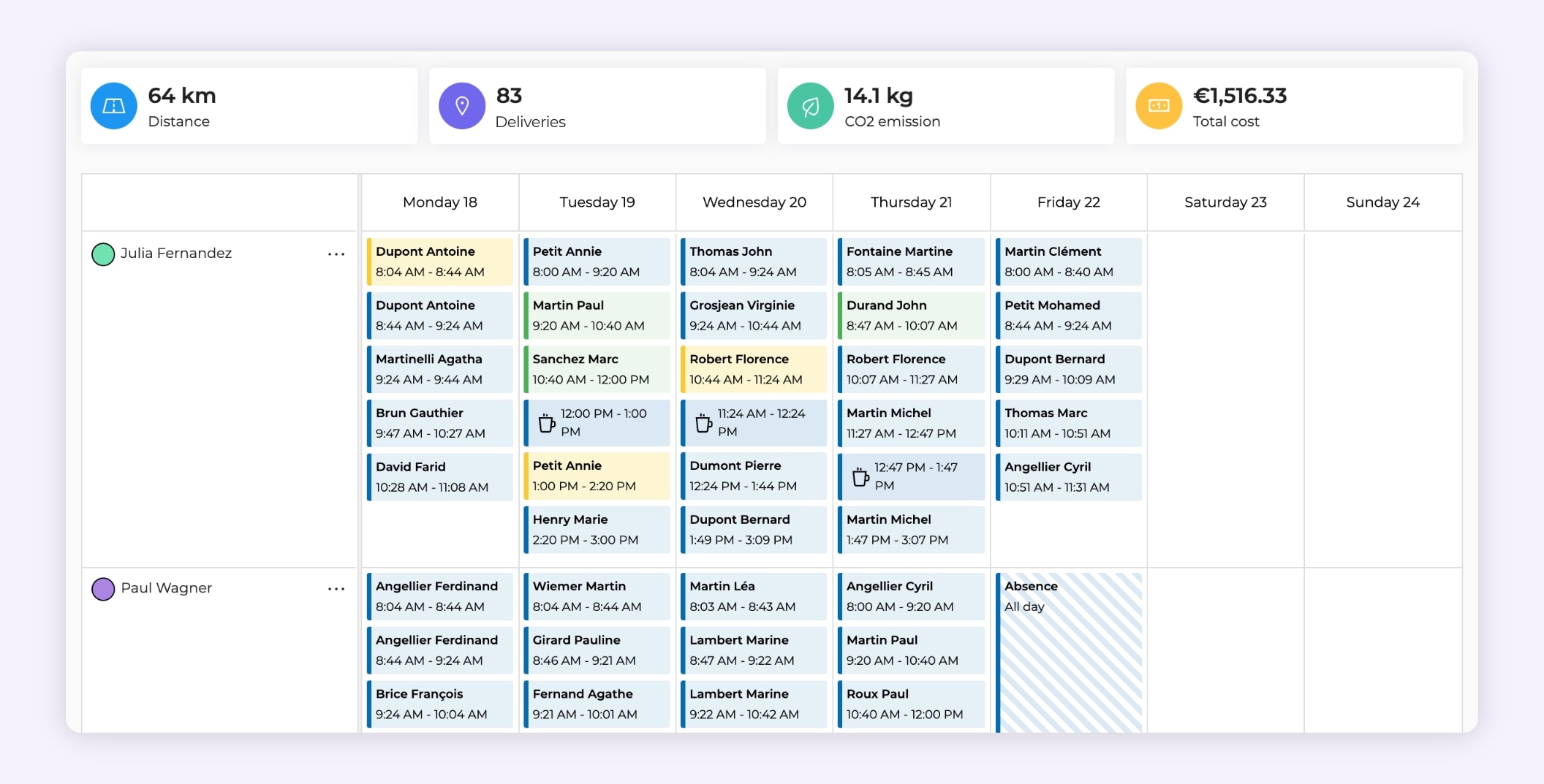
The AntsRoute route optimisation software offers a route planning view.
5. Does the route optimisation software work with other business software already deployed?
Another good idea is to look at the possibilities for linking optimisation software to the various solutions that make up your information system (CRM, ERP, etc.). Such IT “bridges” are invaluable for avoiding double entries and errors, and therefore increasing team productivity.
By choosing AntsRoute, you benefit from 3 types of technological solutions, depending on your needs:
- Our technical teams have developed specific modules for easy interconnection between AntsRoute and WooCommerce, PrestaShop, Google Calendar and Odoo software.
- Zapier lets you connect AntsRoute to over 2,000 applications such as Google Sheets, Salesforce, Quickbooks… even if you don’t know how to code!
- Thanks to our fully open Rest API, even the most demanding professionals can integrate our application directly into their in-house solution to build a made-to-measure IT ecosystem.
6. Is the solution intuitive and easy to use on all devices?
Can you imagine your employees being stuck behind their screens for hours, just to learn how to use the new route planning software? But that’s what’s likely to happen if the user experience is poor. The best route optimisation software is useless if your teams do not adopt it.
Most publishers offer a free trial period based on your transport data. Take advantage of this to check whether the tool is as easy to use as it looks… The most colourful solutions are not always the easiest to use, and vice versa!
Another important point: does the tool offer a mobile application? The application is essential to make the day-to-day work of your drivers or field workers easier:
- Retrieve delivery or service routes;
- Start Waze or Google Maps navigation;
- Access customer contact details and useful documents;
- Collect and transmit proof of delivery.
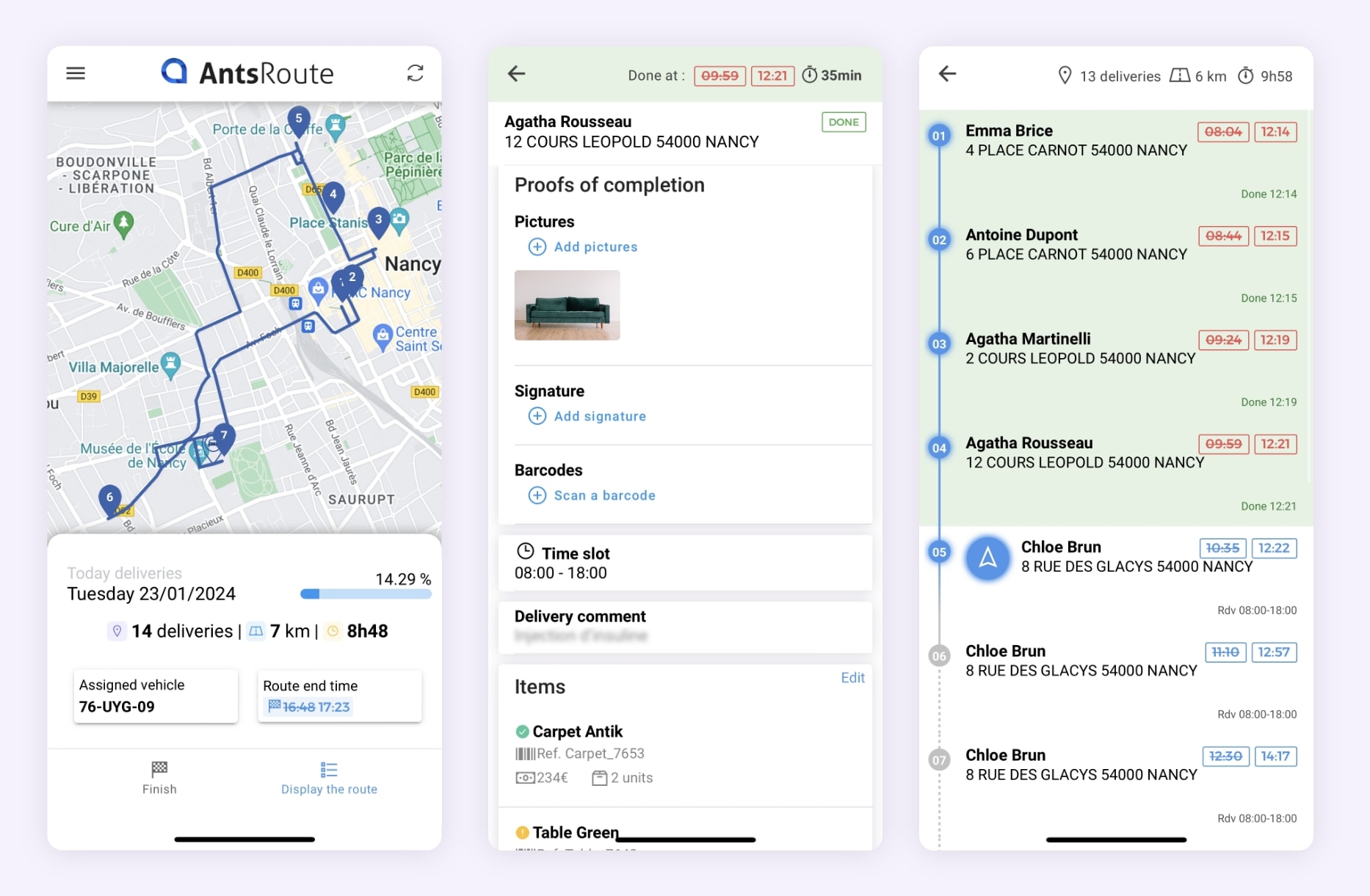
The AntsRoute mobile application for drivers and field staff.
7. What resources does the publisher dedicate to support and assistance?
Ask the publisher of the optimisation software about the human and technological resources available to users. At AntsRoute, for example, our customers have access to several complementary resources on a daily basis:
- An extensive online help centre, with information available 24/7.
- Live chat.
- A support team to guide you through the software and application. Léa, our Customer Success Manager, devotes 100% of her time to supporting our customers at every stage: initial deployment, configuring new functions, changing vehicles, etc.
You should also examine the General Terms of Use (GTCs), which are normally available online. Either way, the publisher must provide you with a written answer to the following questions:
- What are its commitments in terms of service availability?
- What is the maximum response time in the event of a major breakdown?
The Terms and Conditions of AntsRoute state that we “make every effort to ensure an annual service availability of more than 98%”. We also commit to dealing with major anomalies within 4 hours, and to resolving the situation within 24 working hours.
8. What is the size of the technical team and where do they work?
Guaranteeing customers effective support in the event of an anomaly or breakdown, however minor, requires experienced in-house developers… and if possible in the same time zone. The technical team at AntsRoute is made up of around ten developers, all based at our premises in Nancy, France.
9. How can the software be customised and upgraded?
If your company has succeeded in standing out from its competitors, it is thanks to certain specific features that make your offer unique: the type of products shipped, the efficiency of your organisation, the quality of your customer service, and so on. Good optimisation software should help you to plan even more efficient routes, while taking account of these unique features that are your strength.
That’s why our developers have integrated many custom fields into AntsRoute, which can be easily configured to optimise the management and reading of information flows.
To make it easier for you to scale up, we also offer pricing packages that keep pace with your growth. Is your business growing and new requirements are emerging, such as a dedicated interface or advanced integrations? Our packages can be adapted to any type of organisation!
Want to be sure that AntsRoute is the best route optimisation software for your business? Go to this page for a free 7-day trial, in a real-life situation, using your own transport data!
Free 7-day trial | No credit card required
Contenu
- 1. Does the route optimisation software provide all the required functions?
- 2. Does the preferred solution take into account all your business constraints?
- 3. What are the publisher’s references in your sector?
- 4. Are the proposed planning methods adapted to your needs?
- 5. Does the route optimisation software work with other business software already deployed?
- 6. Is the solution intuitive and easy to use on all devices?
- 7. What resources does the publisher dedicate to support and assistance?
- 8. What is the size of the technical team and where do they work?
- 9. How can the software be customised and upgraded?




